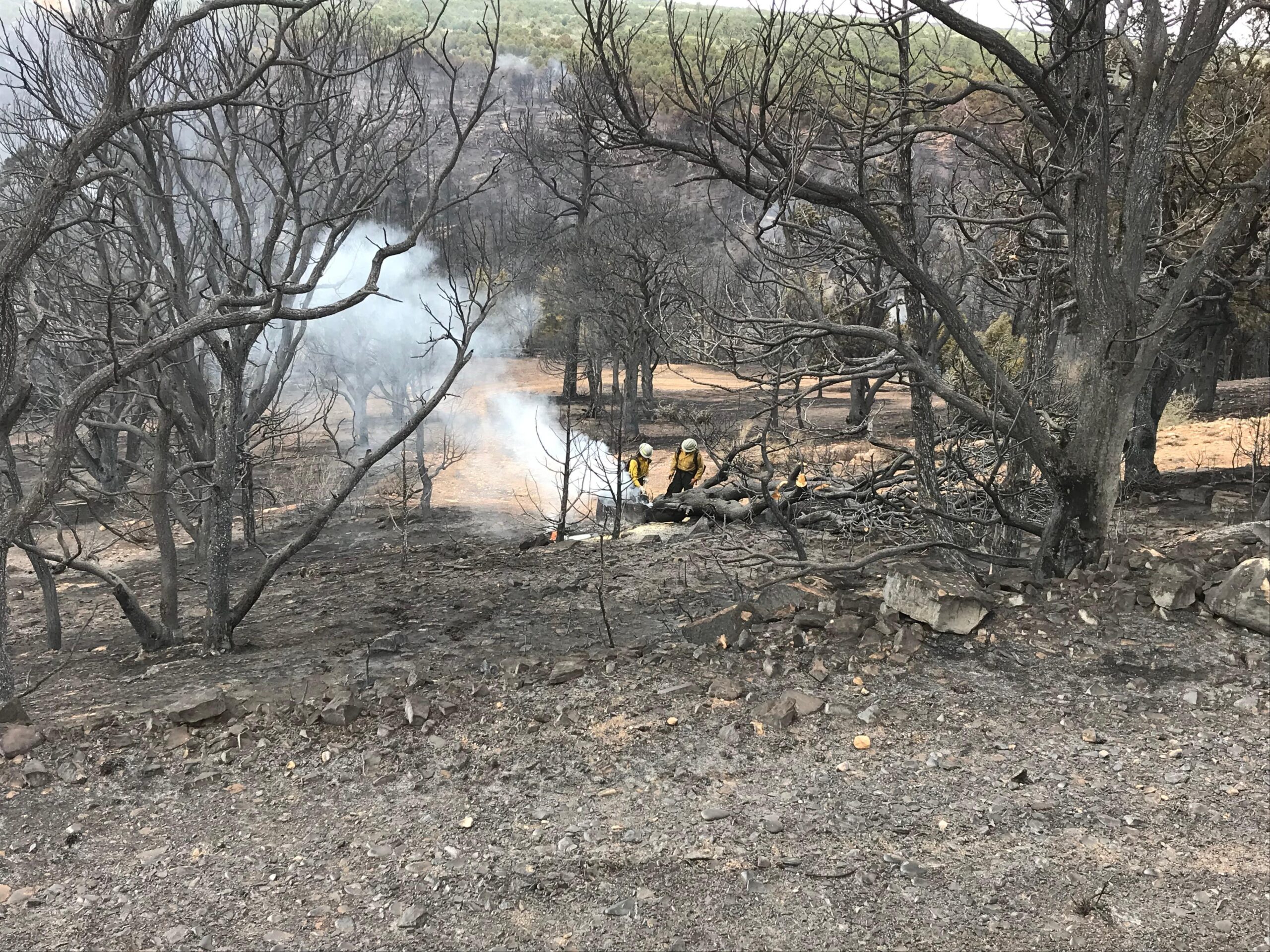
A prescribed fire set by the U.S. Forest Service to clear brush and other vegetation sparked a May wildfire that destroyed a home in southwestern Colorado, a preliminary investigation by the federal agency shows.
The Forest Service started the planned burning on May 16 on agency-managed land near Montrose. Crews monitored and patrolled the area after the burning and did not report seeing any flames or any significant smoke or heat, the service said in a statement.
Four days later, the agency said that high winds likely nourished flames from the prescribed fire and pushed them beyond containment lines. The resulting Simms wildfire spread rapidly through dry brush, grass and forested areas and burned about half a square mile of federal and private land.
“Our efforts, unfortunately, resulted in an undesirable outcome, despite the careful, detailed planning by experienced resource professionals,” Chad Stewart, Forest Supervisor for the Grand Mesa, Uncompahgre and Gunnison National Forests, said in a statement.
Angry residents confronted federal officials at a community meeting after the wildfire, demanding to know why the agency authorized prescribed burning after weeks of dry, windy weather.
The Simms fire is likely to add to a growing backlash against prescribed fires across the West. The wildfire erupted days before Forest Service Chief Randy Moore announced a nationwide pause on prescribed fires on National Forest land after investigators discovered that planned burns sparked the Hermits Peak and Calf Canyon fire in New Mexico, which has torched hundreds of buildings and burned a forested area about the size of Los Angeles.
Scientists and other experts say prescribed fires are an essential tool for improving land conditions and reducing fuel sources that can feed dangerous wildfires, which are growing more intense across the West amid climate change and years of drought.
Even with extensive planning and cooperative weather conditions, prescribed fires are risky and can quickly spread beyond the control of supervising fire crews. State lawmakers rescinded the Colorado State Forest Service’s authority to conduct prescribed fires after a 2012 burn near Conifer started the Lower North Fork fire, killing three people and destroying nearly two dozen homes.








